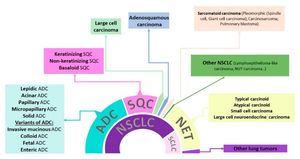Researchers have made significant strides in developing innovative protein minibinders aimed at Toll-like Receptor 3 (TLR3), which plays a pivotal role in mediulating antiviral immune responses. The need for effective vaccine adjuvants led to this groundbreaking research, which leverages computational protein design techniques to craft stable, targeted agents capable of enhancing immune activation.
Toll-like receptors (TLRs) serve as the first line of defense against pathogens, initiating immune responses by recognizing distinct molecular patterns. TLR3 is particularly interesting because it is activated by double-stranded RNA (dsRNA), which is commonly produced during viral infections. While several TLR3 agonists exist, they often face challenges related to their formulation, stability, and safety. The team set out to engineer specific, stable, and easy-to-formulate protein-based agonists for this receptor, addressing the limitations of existing nucleic acid-based adjuvants.
The researchers utilized advanced computational models to design small protein minibinders with nanomolar affinities to human TLR3. Through methodologies such as yeast surface display and biochemical characterization, the minibinders were screened for effective binding. Six of the eleven minibinders demonstrated effective binding with affinities ranging between 43–1500 nM, indicating promising candidates for inducing TLR3 signaling.
Notably, employing multivalent forms of these minibinders—the minibinders were genetically engineered to fuse together multiple copies—showed significantly improved activation of TLR3. This complex mechanism of receptor clustering allows for enhanced signaling as multiple TLR3 molecules come together to initiate immune activation, showcasing the potential of these engineered proteins as effective adjuvants.
Cryo-electron microscopy (cryo-EM) provided structural insights, allowing the team to visualize how the minibinders interacted with TLR3. The study revealed binding on the concave surface of TLR3, which had previously posed challenges due to its highly glycosylated exterior. By examining the structural dynamics, researchers noted the effects of steric clashes with nearby glycans, which may be exploited to create more refined protein switches.
Overall, this study not only demonstrates the efficacy of computationally-designed protein minibinders as TLR3 agonists but also sets the stage for developing new vaccine strategies. The modular structure of the minibinders facilitates customization, potentially leading to targeted immunotherapies for various viral infections. Future research may focus on enhancing receptor engagement and optimizing delivery methods to improve therapeutic effectiveness.
With the need for innovative strategies to combat viral diseases ever-increasing, this research highlights the exciting direction of protein engineering within the immunological field.



